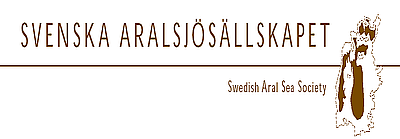2c.
Climate policies
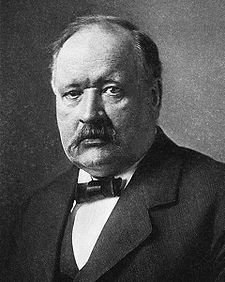 The general understanding that the global climate will be influenced by emissions of carbon dioxides from combustion of fossil carbon is old, and a first estimation of the size of the effect (fairly accurate!) was published by Swedish chemist Svante Arrhenius in 1896. As use of oil, coal, and gas increased, scientist got worried and in 1988 the Intergovernmental Panel on Climate Change (IPCC) was formed by the World Meteorological Association (WMO) and UN Environmental Programme (UNEP) to study and follow the development. IPCC is coordinating and reporting on the research of thousand of scientists. The assessment reports, the most recent is no 4 from 2007, summarizes the collective understanding of climate change and its consequences as well as projections into the future under different assumptions. In the summary for policymakers in AR4, we read that 1) warming of the climate system is unequivocal. 2) Most of the observed increase in globally averaged temperatures since the mid-20th century is very likely (>90%) due to the observed increase in anthropogenic (human) greenhouse gas concentrations.
The general understanding that the global climate will be influenced by emissions of carbon dioxides from combustion of fossil carbon is old, and a first estimation of the size of the effect (fairly accurate!) was published by Swedish chemist Svante Arrhenius in 1896. As use of oil, coal, and gas increased, scientist got worried and in 1988 the Intergovernmental Panel on Climate Change (IPCC) was formed by the World Meteorological Association (WMO) and UN Environmental Programme (UNEP) to study and follow the development. IPCC is coordinating and reporting on the research of thousand of scientists. The assessment reports, the most recent is no 4 from 2007, summarizes the collective understanding of climate change and its consequences as well as projections into the future under different assumptions. In the summary for policymakers in AR4, we read that 1) warming of the climate system is unequivocal. 2) Most of the observed increase in globally averaged temperatures since the mid-20th century is very likely (>90%) due to the observed increase in anthropogenic (human) greenhouse gas concentrations.
Based on these insights, the 1992 UN conference in Rio de Janeiro (UNCED) negotiated and signed a United Nations Framework Convention on Climate Change (UNFCCC). The convention went into force in 1994 when 50 states had ratified. Today 194 states are parties to the convention, that is, all states on Earth take part. The objective of the Convention is to stabilize greenhouse gas concentrations "at a level that would prevent dangerous anthropogenic (human induced) interference with the climate system." The convention asks for mitigation (reduction) of climate change, but there is also adaptation to climate change mentioned.
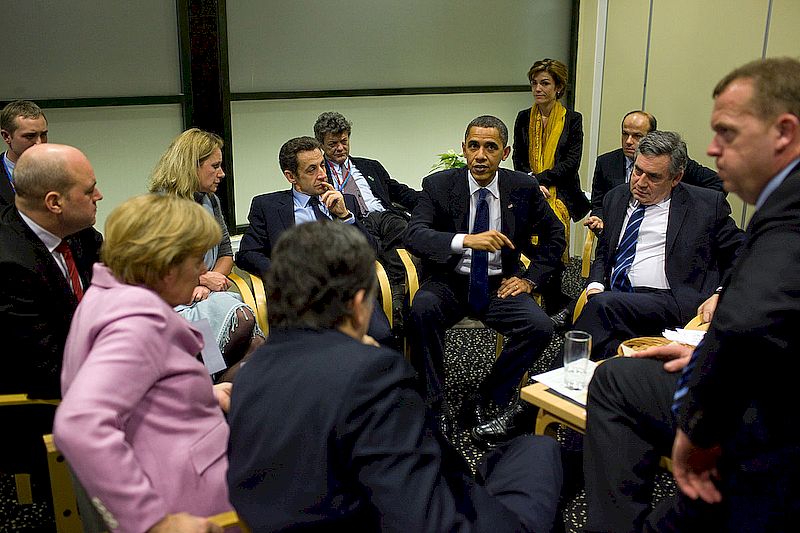
President Barack Obama briefs European leaders, including British Prime Minister Gordon Brown, French President Nicolas Sarkozy, EU President Swedish Prime Minister Fredrik Reinfeldt, German Chancellor Angela Merkel, European Union Commission President Jose Manuel Barroso, and Danish Prime Minister Lars L. Rasmussen, following a multilateral meeting at the United Nations Climate Change Conference in Copenhagen, Denmark, Dec. 18, 2009. Photo by Pete Souza.
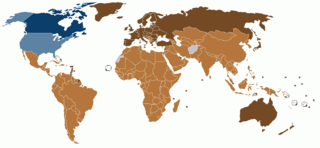 The activities under the convention are negotiated at Conferences of the Parties (COPs), mostly organized yearly. At the 1997 COP3 in Kyoto, Japan, a Protocol, a detailed plan of the actions required by each party of the convention, was signed. The Kyoto Protocol contains binding targets for 37 industrialized states and the European Community (so-called Annex 1 countries) to reduce GHG emissions by 5% compared to the 1990 levels for the five-year period 2008-2012. Developing nations (Annex 2 countries) did not have obligations according to the Protocol. Rules for implementing the Kyoto Protocol were adopted at the COP7 in Marrakesh in 2001. The Protocol entered into force in 2005 after Russia had signed. Of the major emitters, USA has not entered the Protocol (meaning that the total target decreased to 4.2% reductions), while Australia with a new government joined in 2008 and Canada left in 2012.
The activities under the convention are negotiated at Conferences of the Parties (COPs), mostly organized yearly. At the 1997 COP3 in Kyoto, Japan, a Protocol, a detailed plan of the actions required by each party of the convention, was signed. The Kyoto Protocol contains binding targets for 37 industrialized states and the European Community (so-called Annex 1 countries) to reduce GHG emissions by 5% compared to the 1990 levels for the five-year period 2008-2012. Developing nations (Annex 2 countries) did not have obligations according to the Protocol. Rules for implementing the Kyoto Protocol were adopted at the COP7 in Marrakesh in 2001. The Protocol entered into force in 2005 after Russia had signed. Of the major emitters, USA has not entered the Protocol (meaning that the total target decreased to 4.2% reductions), while Australia with a new government joined in 2008 and Canada left in 2012.
What we need is no less than a transition to a fossil fuel free world, but it is far away. It is well understood that the reductions of emission required by the Kyoto Protocol is very far from sufficient to mitigate (combat) climate change as it only covers some 15% of the global emissions, and obligations are limited. Business as usual, if nothing is done, will lead to very dangerous interference with the climate system. In 2011 emissions are still increasing. China and India are increasing their use of fossil fuels rapidly, and the USA remains on a very high level. Efforts to establish a global agreement on the reduction of emission of GHGs have been on the agenda of the COPs since long. The 2009 COP15 in Copenhagen was set up to reach an agreement, but failed. The so-called Copenhagen Accord only says that the goal of the convention is to keep temperature increase within 2 degrees, but no commitments. The 2011 COP17 in Durban again aimed for an agreement, but ended with the so-called Durban Package, a roadmap for how to work for an agreement to be implemented in 2020. This time, all states signed, but it does not contain any binding commitments on reductions of emissions. At the COP18 in Doha in 2012 the parties to the Kyoto Protocol agreed to a second period 2013-2020 with a total reduction of 18% below the 1990 levels for the Annex 1 countries. Objections from Russia, Ukraine, and Belarus may change this. The establishment of a Climate fund, to cover costs for developing countries to adapt to climate change, was agreed.
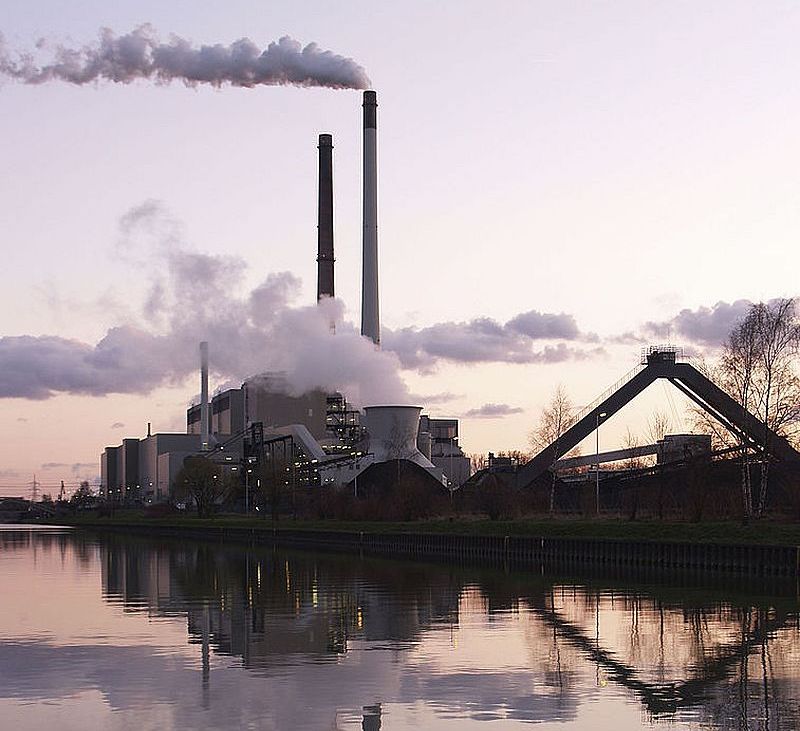 Due to emissions trading, coal may become a less competitive fuel than other options. Coal power plant in Datteln (Germany) at the Dortmund-Ems-Kanal. Photo: Arnold Paul
Due to emissions trading, coal may become a less competitive fuel than other options. Coal power plant in Datteln (Germany) at the Dortmund-Ems-Kanal. Photo: Arnold Paul
The European Union states divided the Kyoto obligations of reduction of emissions between themselves unequally, depending on economy and level of emissions. Based on the COP3 in Kyoto, the EU established a cap and trade system for CO2, called European Trading System, ETS. In this system a number of major European industries, presently about 11 000, have been given allowances (rights) to emit specified amounts of CO2. Those emitting more have to buy additional rights and those, which can reduce their emissions, may finance the costs of the investments needed by selling emission rights. These are sold and bought in a stock market, just like shares. In 2010 the price for the right to emit 1 ton of CO2 was about 13 Euros, but it has since then declined. The ongoing second trading period started in 2008 and will end in December 2012. The third trading period, 2013-2020, will include more GHGs, especially methane and nitrous oxide, more sections especially air traffic, and reduced allowances of emission rights. The so-called Clean Development Mechanism, CDM, which allows Annex 1 parties to count emission reductions from investment in developing countries, will also continue.
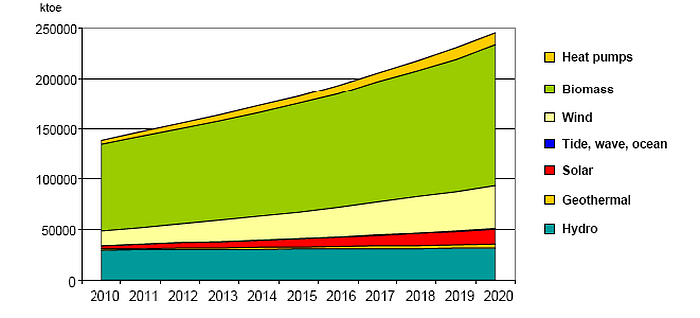 EU's climate and energy policy nicknamed 20-20-20 became legally binding in 2009. It includes 20% reductions of CO2 emissions compared to 1990 levels, 20% renewable energy, and 20% less primary energy (the energy efficiency goal) compared to projected levels all by 2020. Allowances of the 3rd period of ETS will be set to achieve the emission reductions. EU has offered the other parties of the Climate Convention to increase its levels to 30% reduction of emissions “if others do the same”, an offer not accepted by anyone. It appears that both levels are insufficient to keep global warming within the 2-degree target even if everyone joined; EU only accounts for just above 10% of global emissions.
EU's climate and energy policy nicknamed 20-20-20 became legally binding in 2009. It includes 20% reductions of CO2 emissions compared to 1990 levels, 20% renewable energy, and 20% less primary energy (the energy efficiency goal) compared to projected levels all by 2020. Allowances of the 3rd period of ETS will be set to achieve the emission reductions. EU has offered the other parties of the Climate Convention to increase its levels to 30% reduction of emissions “if others do the same”, an offer not accepted by anyone. It appears that both levels are insufficient to keep global warming within the 2-degree target even if everyone joined; EU only accounts for just above 10% of global emissions.
Each country in the EU as well as outside has its own climate and energy policy to prepare the country for a post peak oil world and mitigate climate change. For this, it uses different policy tools. Especially relevant for climate mitigation are actions taken to increase the share of renewables, and the taxation on carbon dioxide emissions. In the first category belong state subsidies to support change of heating system, to encourage energy efficiency, e.g. insulation of buildings, or energy efficient cars. Germany’s feed-in tariffs offer to buy electricity from all private producers at a fix price, which stimulate investments. Sweden has high carbon dioxide taxation, about 10 eurocent per kg, which makes other fuels than oil and coal more attractive.
Not only international policies, but also market forces and security concerns, contribute to the transition to a fossil fuel free world. As investments in renewable energy improve and become competitive, the emissions will decrease for economic reasons. Secondly, energy security concerns will push counties to reduce their dependency on imported fuels from abroad and politically less dependable countries. Today we see an increasing number of nations, local communities and households investing in local and renewable energy supplies to increase energy security and avoid unpleasant economic surprises.
Materials for session 2c
Basic level
- Climate and Society, a ppt presentation by Lars Rydén.
- The United Nations Framework Convention on Climate Change, UNFCCC.
- European Union climate policy and the ETS
- Understanding the COP17 UN Climate Talks – in 3 minutes (YouTube film)
- The EU Renewable Energy Targets
Medium level (widening)
- Read The Unbalanced Carbon Cycle – a global problem by Christian Azar and Göran Berndes. In: Man and Materials flows – Towards sustainable materials management.
- Read pages 6-17: Climate economics – the state of the art, Stockholm Environment Institute.
- Carbon Cycle and Global Warming (YouTube film)
Advanced level (deepening)
- Study in some detail Germany’s climate policy (two documents):
Document 1
Document 2 - Study in some detail Sweden’s climate policy.
- Select another country to study its climate policy.
- Conversations with History: Lars-Erik Liljelund (YouTube film, 55 minutes)
References
Karlsson, S. (ed.) 1997. Man and Materials flows – Towards sustainable materials management. Baltic University Press, Uppsala.
BUP Sustainable Development Course
